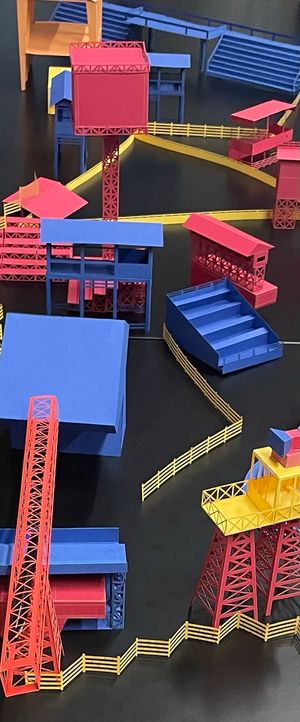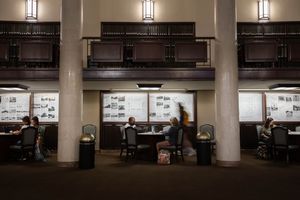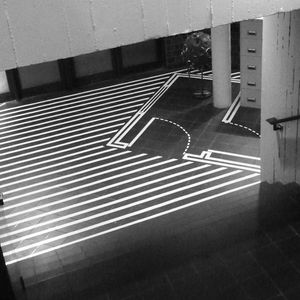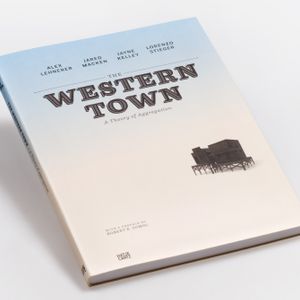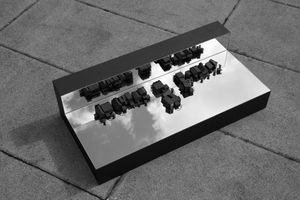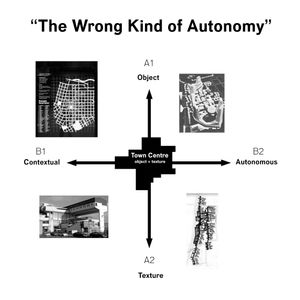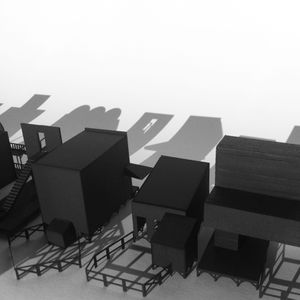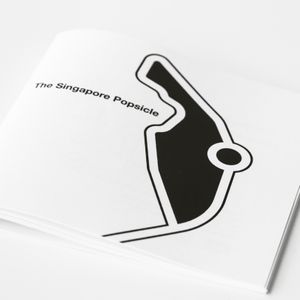This research deconstructs the cultural phenomenon of the rodeo through the lens of architecture by tracing its history, analyzing its structures, and examining the ideologies that are projected onto them. Viewed this way, the rodeo can be understood as a cultural space that challenges America’s colonial history and demonstrates how under-represented communities have embraced the rodeo and made it their own.
The origins of the rodeo in the U.S. can be traced back to the emergence of wild west shows in the mid 1800’s. During their inception, wild west shows constructed a setting that recreated the acts of colonization, specifically propagating the myth of manifest destiny. They accomplished this feat by constructing structures that orchestrated interactions between humans and animals, while providing viewing platforms for spectators, thereby constructing a spectacle out of an expansionist narrative. These interactions simulated events that would normally occur unobserved by an audience in the prairie, but now retold the history of America’s westward expansion at the very time that this colonization effort was taking place. Over time, the wild west show’s performance spaces were adapted by communities in both rural and urban areas, giving birth to the modern rodeo, which perpetuated this cultural space’s colonial underpinnings.
The structures used in a rodeo demonstrate high degrees of control to receive, corral, and release animals into an arena where they interact with human performers and are observed by human spectators. While the form of these structures—animal pens, chutes, bleachers, parking lots, and concession stands—allows them to support specific functions, the voids between create spaces of opportunity, places where freedom of movement and impromptu interactions give rise to cultural production. Instead of reinscribing traditional “cowboy culture” and rehearsing the ethos of manifest destiny, these rodeo spaces can be appropriated by different cultural groups and identities to choreograph their own simulation of society. These simulations, embodying the values and ideology of identity groups, challenge some of the core elements of the mainstream image of the rodeo. While the structures create very specific effects—unpredictable interactions between humans and animals—they are indifferent to the varying ideologies projected onto them. For instance, the All-Black Rodeo, the Women’s Rodeo, the Native American Rodeo, and the Gay Rodeo promote inclusive communities where a wider range of ideologies are given a chance to participate in rodeo events.
Today, the rodeo has become a substructure; underrepresented communities and subcultures project their own identities onto the grounds using the indifferent structures to create speculative spaces to build their communities. Within this context, this paper calls into question the relationship between architectural form and function, and the role this plays in shaping society through the manifestation of ideologies within culture. The cultural spaces of the rodeo can then be used as a critical lens by understanding the relationship between the architectural structures of the rodeo, and the ideologies of underrepresented and suppressed communities that transform the rodeo into an inclusive space.

